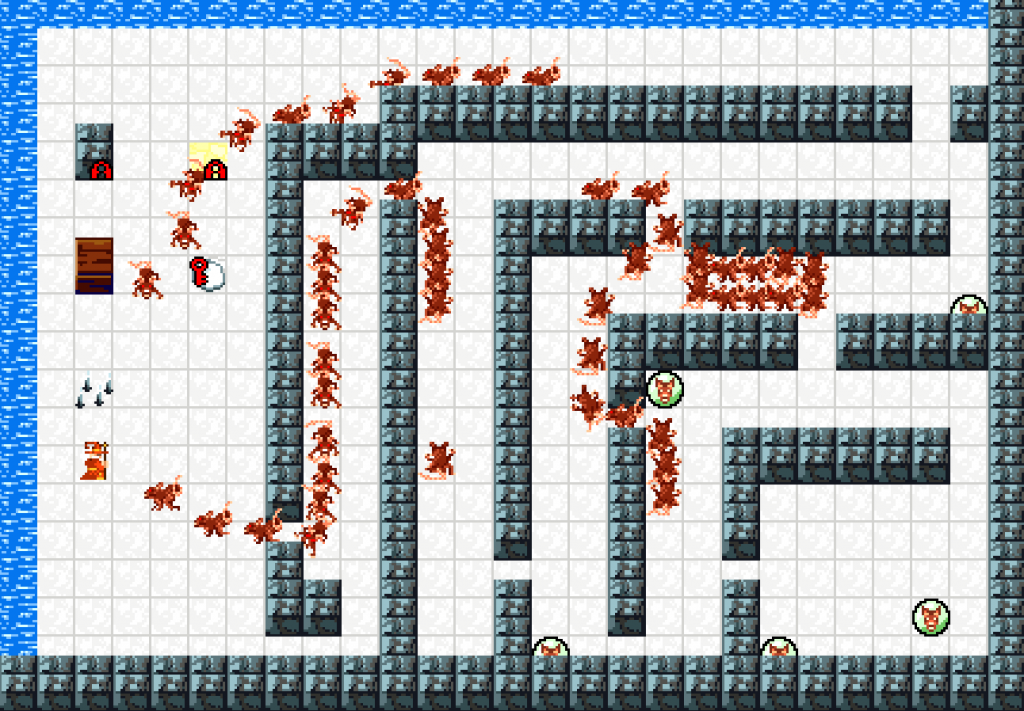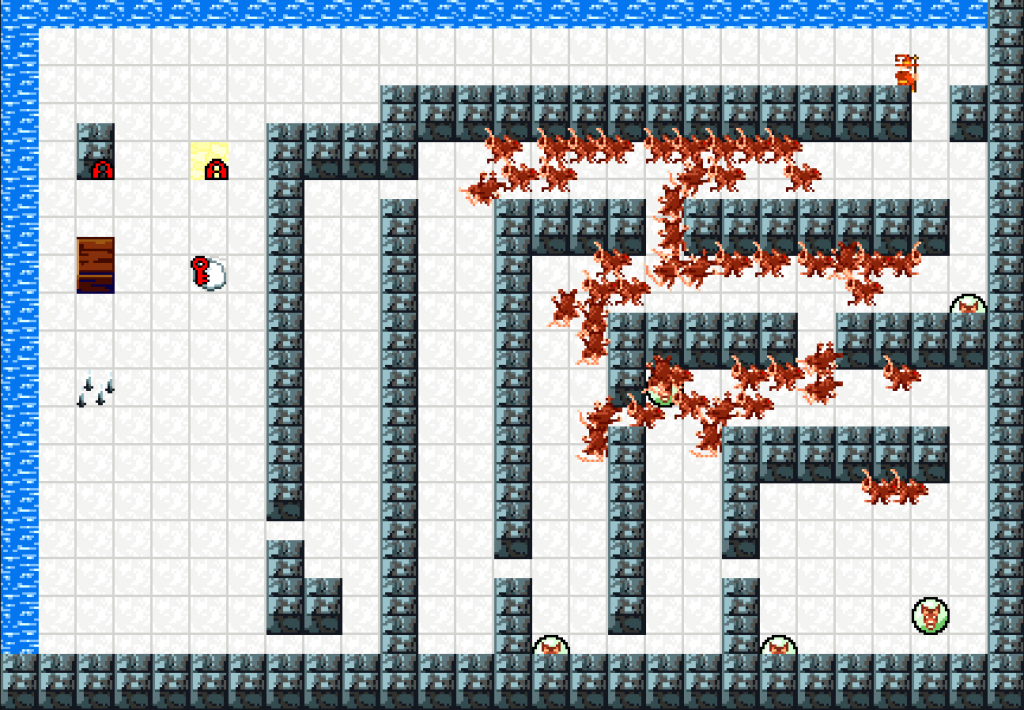I’ve gotten things to a state where it’s good enough that I want to show it off. This video shows all the features I’ve put in place, and what happens when they’re removed. It’s kind of like that elementary school science experiment where you bake several batches of cookies and leave out a different ingredient each time, to see the results.
The pathfinding AI is a collection of features:
- Gauntlet Movement: Monsters move towards the summoner. They will slide along walls with diagonal movement, but can’t navigate around corners and will get stuck easily.
- Sidestepping: Even without any maze solving code, the Gauntlet movement can be improved a bit. When monsters sense that they have been blockaded for about one second, they randomly try moving in a diagonal towards the summoner, which helps them get around walls.
- Raw Pathfinding: A maze solving algorithm points the monsters towards the closest viable path to the summoner. If the monster has a direct, visible path to the summoner, it switches back to Gauntlet movement, because that tends to be faster than using the path. Notice how the rats on the right side get stuck because they get to the doorway at precisely the same time. I call this the Three Stooges Effect, and I came up with a pretty cool solution for it:
- Traffic Fields: A traffic director data type watches the monster movement, and adds vectors to each floor tile. If a monster tries to walk on a tile that has a vector pointing in the opposite direction, it gets blockaded just like a wall. This way, whoever gets there first sets up the flow of traffic for that particular tile. Each vector times out after a second or so of inactivity, which lets the patiently waiting rats through. Look at the rats on the right now–they are behaving so orderly! Even though both rats reach the doorway at the same time, the top one got evaluated first, got its movement vector placed there, and successfully repelled the lower rat (and all his friends). The visualization lets you see the tile vectors as arrows.
- Creature Weight: The numbers you see on each tile in the Traffic Field visualization are the “weights” of each tile. These are used in the maze solving algorithm. They actually represent the number of steps it takes to get to that particular tile from the point of origin: in this case, the summoner. The fastest route is easily generated by starting at the monster’s location, and just picking the lowest number from the eight available directions. With creature weight taken into account, any tile occupied by a creature gets its weight bumped up by a couple points, or 5 points if the creature is blockaded. Notice how the rats don’t all take the same path: once a few have started using a particular route, the weight to cross it is now larger than another route. Not only does this decrease the time it takes for a large crowd to solve the maze, but it also has the great side effect of flanking.
- Uncrowding: This last one is subtle, but makes a difference. When a monster has been blocked for more than a couple full seconds, it picks a random direction to move which is roughly in the opposite direction they were originally trying to go. This breaks up congestion and slightly improves the maze solving time.
At this point, the pathfinding AI is good enough to leave alone for a while. I just wanted to get it to a point where the monsters don’t get stuck, and you won’t be able to cheese them (at least not easily).

